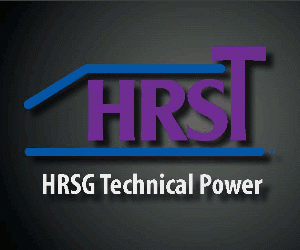Safety time out: Review this
Checklist before proceeding
Safety is a perennial favorite topic at the Combined Cycle Users Group (CCUG) for obvious reasons and at least one non-obvious one: With declining staff at sites, each person is responsible for more, and more varied, tasks. Chances for human error grow. While the safety issues addressed here are very site-specific, the take-away should more be a gentle reminder about anything similar at your plant.
Chemical handling. Marih Salvat, Operations Manager, Tenaska Virginia Generating Station (and member of the CCUG Steering Committee), said they “overhauled chemical handling and safety” to avoid wearing full PPE (personnel protection equipment) when not necessary. Because low and high risk chemicals were often handled near each other, policy was to default to the most restrictive PPE for containment areas. Now, the plant separates high risk areas from nearby low risk areas using plexiglass curtains and safety shields (figure).
Access, lighting, fall risks. Robert Mash, Plant Manager, GE Power Services for River Road Generating station (also a steering committee member), opened with a tale of an intruder (non-malicious apparently) who breached the perimeter fence and entered the unsecured transformer yard fencing, which prompted several upgrades for access and control, including electronic card reader access (tied into the existing access control system), and tamper-resistant emergency exit crash bars to manway gate doors on the east and west side of the yard.
Previously, the transformer yard, where the generator breaker and step-up transformers, generator excitation and LCI systems, and other critical plant equipment were located, was thought secure because it was inside the perimeter fence. The yard is accessed at least four times a day for routine equipment checks.
In response to an audience question, Mash said there was nothing wrong with the fencing, but they did add security cameras as well.
Then Mash identified with photos several potential fall hazards and remedies around the HRSG, including insufficient handrail/guardrails in areas where critical work is performed. This was followed by a review of lighting system additions in areas like the gas yard, behind the cooling tower, and turbine transition to HRSG. All existing lights were replaced with LEDs in 2017; the assessment of additional lighting needs followed.
Readers are urged to link to the actual presentations to view the before and after lighting and railing photos, only one of which is shown here (figure).
During the Q&A period, attendees and presenters discussed upgrading intercom systems. One plant rep said they were currently reviewing the existing system. Another mentioned that some folks have a hard time hearing the lightning alerts. A third reported that all people on their site were required to have radios, with “extenders” installed to cover the entire plant. At the “all-hands” monthly meetings, personnel are re-familiarized with the sounds and what they signify at still another facility.
Finally, a user mentioned “lone worker” or “man down” devices for low-staff sites – these are clips workers wear and can indicate whether a worker is “not active,” i.e., snoozing or non-responsive, with a signal transmitted to the 9-1-1 system. This was tested at their plant and “works well.”
www.ccj-online.com/issue-55/11nmc-best-practices-orlando-cogen
Amine skid is separated from phosphates handling area so PPE appropriate to each area can be used





